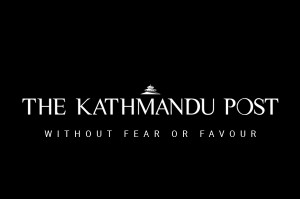Mon, Jan 5, 2026
Valley
City mayor vows to prove himself after slow start
In the run-up to the mayoral race, Kathmandu Metropolitan City (KMC) Mayor Bidya Sundar Shakya unveiled an ambitious poll manifesto, promising to accomplish 101-tasks within the first 100 days in office. It was evident from the beginning Shakya promised far too much than his rivals to win the elections.
bookmark
Anup Ojha
Published at : December 11, 2018
Updated at : December 11, 2018 10:44
Kathmandu
In the run-up to the mayoral race, Kathmandu Metropolitan City (KMC) Mayor Bidya Sundar Shakya unveiled an ambitious poll manifesto, promising to accomplish 101-tasks within the first 100 days in office. It was evident from the beginning Shakya promised far too much than his rivals to win the elections.
Kathmandu voters took his words at face value and elected him to the office with a huge margin. Almost 19 months have gone by since Shakya assumed office, but Kathmandu residents are still waiting to see the promises fulfilled.
Evidently, Shakya bit off more than he could chew during the poll campaign. Despite promising to accomplish one task each day, he has not done anything noteworthy except increasing allowances for the elderly people.
KMC’s apathy in addressing day-to-day problems faced by common people has made him a subject of ridicule on social media.
On June 20, some angry conservationists and young people vented their ire by handing over a bundle of grass from Rani Pokhari to KMC officials, for the sluggish reconstruction work. “This was nothing, but much grass off the cow’s feet! Shame game changed nothing over the next few months,” one of them wrote on his Facebook wall.
After a dismal start, the KMC has been gearing up to address basic public concerns, while fleshing out plans for sustainable development of the Capital.
Wary of growing public backlash, the KMC in co-ordination with other concerned stakeholders have been carrying out cleanliness drive for weeks in the Capital. It has also overhauled the bureaucracy to make its frontline service accessible to the public.
Last Saturday, more than 15 tonnes of dust and solid waste were removed from Ratnapark-Keshar Mahal stretch and Bansghari-Maharajgunj stretch of Kathmandu.
Since the cleanliness drive started on November 25, under the slogan—City Beautification Aid Programme—the KMC has removed over 200 tons of dust and solid waste from streets of Kathmandu.
Two mechanical boomers are being used 24x7 to remove dust from the streets, besides deploying around 750 sweepers and dozens of road workers.
Last week, the KMC gave itself a four-month deadline to make the city dust and pollution free.
“The beautification drive is just one of the many works being carried out at the moment. We are confident that our work would bring marked changes in next few months,” Shakya told the Post.
After prolonged delays, the KMC has also started works for reconstruction of major monuments including Kasthamandap, a seventh-century wooden monument that was reduced to rubble by the earthquake in 2015 and Rani Pokharai.
Similarly, works for reconstructions of Sohrakhutte Paati and Waterfall Park in Tokha are in progress, while preparations are also underway to build new office of the metropolis in Sundhara.
Shakya says his next focus would be to make KMC’s service transparent and accessible to the public, besides controlling pollution, constructing toilets, expand health service, preserve historical monuments, address problems of parking, water crisis and similar basic problems faced by people. To this end, the KMC is working with other stakeholders including ministries and departments.
Conceding he made tall promises during mayoral election campaign, Shakya said the KMC could have done better had he received adequate support.
There is very little that KMC can do on its one as its jurisdiction overlaps with the Road Department, Kathmandu Upatyaka Khanapani Limited and Nepal Electricity Authority among others.
KMC officials say the central government has been playing a constructive role, in the past few months, by linking the KMC with other stakeholders to clear bottlenecks.
The KPS Oli government has long seen Shakya’s dismal performance as KMC Mayor is one of the major reasons for public disenchantment and growing resentment. Apparently, the federal administration now appears keen to support the KMC.
Shakya says that a lot more could have been done had there been good co-operation from KMC staff. “More power should be devolved to mayors if the public want to see a radical change,” he said.
Most Read from Valley
Editor's Picks
Nepal’s workplaces still fail new mothers
When will Nepali-origin professional footballers in Europe play for Nepal?
‘Like a dream’: Labourer from Dalit community secures full MBBS scholarship
Why Nepal is launching a system to track foreign nationals
Nepal achieves global vaccine target, seven years ahead of schedule
E-PAPER | January 05, 2026
×




 5.4°C Kathmandu
5.4°C Kathmandu.jpg)









%20(1).jpg&w=300&height=200)

